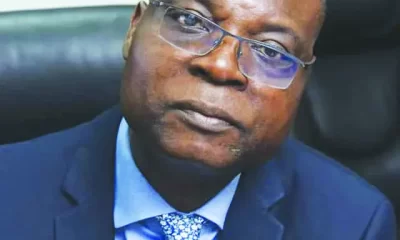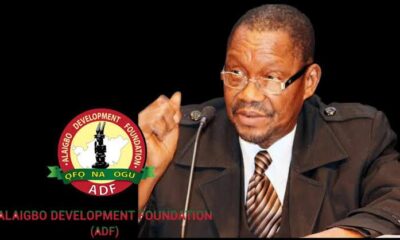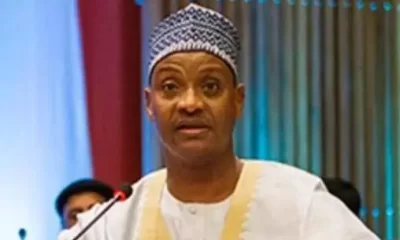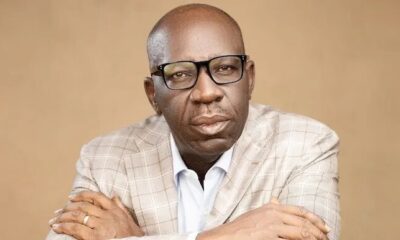Political Issues
Ways of Seeing Abeokuta -By Tolu Ogunlesi

Efforts like these are for me a reminder that we can never have too many books exploring our recent and distant history. Especially in a country like ours where the collective memory is startlingly short, and historical revisionism is a seemingly automated and rarely challenged tendency.
In his essay ‘Ways of Seeing’, English art critic and writer, John Berger argues that “the past is not for living in; it is a well of conclusions from which we draw in order to act.” Existing without that “well”, Nigeria has become a land of people collectively exhibiting the delirium and irritability seen in human bodies suffering from chronic dehydration.
Consider the national museum in Lagos; the ultimate definition of “disgrace”. You stroll through it, and emerge wondering whether what you just saw was a teaser, an introduction; expecting someone to show up and take you into the museum proper. Go to Abuja and an even more depressing fate awaits: nothingness! Abuja must be the only national capital in the world that hasn’t got a national museum. In the city’s masterplan, there is a space allocated for the museum. That it remains un-built, while we focus on Ecumenical Centres and Centenary Cities, tells you a lot about our priorities.
Against this tragic backdrop, it is easy to see why every attempt at revisiting our rich and manifold history ought to be eagerly welcomed. Abeokuta – Beyond the Rocks is one such attempt. Published in 2014 by Hakeem Adenekan, a marketing communications professional, it is a photographic catalogue of Abeokuta, heartland of the Egba people (a subdivision of the Yorubas), starting from the city’s founding in 1830.
I find Abeokuta a fascinating place: the only two persons of Yoruba origin to have ever ruled Nigeria – Olusegun Obasanjo and Ernest Shonekan – are from the city. The man who would have become the third – Moshood Abiola, winner of the annulled 1993 presidential election – was also from Abeokuta. Even more interesting; some of their most formidable nemeses – the cousins Wole Soyinka (who, as recently as last week, was still engaged in a war of words with Obasanjo) and Fela Anikulapo-Kuti (who composed famous songs that severely upbraided Obasanjo and Abiola) – have also turned out to be Abeokuta people.
One wonders if the political savvy one associates with Abeokuta has anything to do with its history: the fact that it remained a somewhat independent political unit well after the rest of Nigeria had been completely taken over by the British. In 1893, almost a decade after the Berlin Conference, at which the colonial powers shared out the continent among themselves, the Egbas signed a Treaty of Independence with the colonial administration, resulting in the formation of the semi-autonomous Egba United Government, under the leadership of the ‘Alake’, the paramount ruler of Egbaland. The Egba United Government collected its own taxes and rolled out its own development programmes, like a steel and concrete bridge over the River Ogun in 1911, the same year it “introduced motor lorries into Egbaland.”
Early on in the book we are presented with the text of a document, dated February 1st, 1898, and co-signed by the colonial administrator and the Alake. In the “Proclamation”, the Alake informs his subjects that, acting on the advice of the Governor of Lagos, he was creating new administrative departments (Justice, Communications and Works, Finance, Public Order, Trade and Agriculture, Sanitation and Public Health, and the office of the Secretary to the Government).
You can’t read this book and not be struck by just how much of a pioneering tradition the city embodies. Abeokuta saw European contact before any other place in Western Nigeria (outside of Lagos). It is home to the first church in Nigeria, St. Peters Cathedral, Ake, built by the British in 1844. And then in 1859 the first newspaper in Nigeria, Iwe Irohin, was published in Abeokuta by the British missionary Henry Townsend (according to the book, Ijemo Road in the old quarter of Abeokuta is the equivalent of London’s newspaper hub, Fleet Street). Abeokuta is also home to “the first social and recreation club” in Nigeria, established by the British in 1904, and today known as the Abeokuta Sports Club.
It was one of the first cities in Nigeria to host a railway line; in 1900 the line from Lagos berthed in Abeokuta, en route to Ibadan. (Queen Elizabeth used it when she visited in 1956). In 2005, Crescent University, the first privately-owned Islamic University in Nigeria, was founded in Abeokuta. A few years later, the Olusegun Obasanjo Presidential Library, the first in Africa.
Abeokuta is also a centre of craftsmanship: ‘tie-and-dye’ and pottery being the main products. It is home to a thriving Sawmill, and is “the second largest quarry market in Nigeria”, after Ibadan in Oyo State. Like all Yoruba towns and cities its markets are an important part of the landscape. All of these aspects are documented in Abeokuta: Beyond the Rocks.
There’s a photograph of an old two-storey building, its stone walls browned with age. The caption tells us it was the first high-rise hotel in the city, owned by Oba Ladapo Ademola, Alake between 1920 and 1962, and “a notable meeting point for the Egba elite many years ago.” I have driven past that building many times, but I had no idea what it was. There’s as far as I see, no signage alluding to its luxurious history. We are left to imagine what it looked like in its heyday; the personages and glamorous parties that it must have hosted. A good number of the city’s historical landmarks are similarly rundown, like the original building of St. Peter’s Primary School, Ake (attended by Wole Soyinka). One of the most depressing images in the book is the derelict site of Top Brewery, owned by the now defunct West African Breweries Limited, founded by Chief Adeyemi Lawson in 1964 as the first indigenous brewery in Nigeria.
There are also photographs from today’s Abeokuta, suggesting a city racing to shed its rustic past and embrace a long overdue modernity. The penultimate section is a catalogue of recent developments: the city’s first high-rise; the 12-storey OPIC Plaza (2011), first flyover (2012); and a slew of dual-carriageways and housing estates.
The book’s cover image is one that anyone who has ever climbed the 137m Olumo Rock will instantly recognise; the view of the city looking leftwards from the direction of the rock: the sprawl of rusted tin roofs that appear to be no different today than they were a century ago, punctuated by the twin-towers highlighting the façade of the Central Mosque, opened in 1933. Olumo Rock is the city’s most important landmark; giving the city its name (Abeokuta means ‘Beneath the Rocks’).
We come to coffee-table books more for the images, than the text, because we are convinced that a picture is worth a thousand words. But this is not to say words are not as important; no, they bring much-needed context and meaning to the images that we view. I would have loved to see more explicatory text in the book, as well as a stronger focus on laying out an exhaustive chronology of the city’s history, from founding till date. As it is it feels rather light on the historical elements; a puzzle with important bits left out.
For example I wish the book shed light on how certain members of the Alake’s Council of State – the Osile (Justice Minister), the Agura (Communications and Works) and the Olowu (Finance) later went on to become major kings in their own right. I have always found that somewhat odd about Abeokuta – where other Yoruba towns and cities have only one king, Abeokuta has five; four of whom insist that the one generally adjudged to be the paramount ruler is merely a first among equals.
Page-numbers and a Table of Contents would have made the book much more navigable. The book ends with a hall of fame of Abeokuta’s most distinguished sons and daughters: Bola Ajibola, Ebenezer Obey, Shina Peters, Bukola Elemide (Asa), the Lijadu Sisters, Segun Osoba, Segun Odegbami, Mudashiru Lawal, Simeon Adebo, Adeoye Lambo, Fela Sowande, Bola Kuforiji-Olubi, Saburi Biobaku, Reuben Abati; Amos Tutuola, JF Odunjo, Bola Ajibola, Fola Adeola, Tayo Aderinokun, to name a few.
Efforts like these are for me a reminder that we can never have too many books exploring our recent and distant history. Especially in a country like ours where the collective memory is startlingly short, and historical revisionism is a seemingly automated and rarely challenged tendency. It is therefore gladdening to hear that publisher Adenekan has got plans to replicate this for other cities across Nigeria, and Africa.
Follow me on Twitter: @toluogunlesi



















